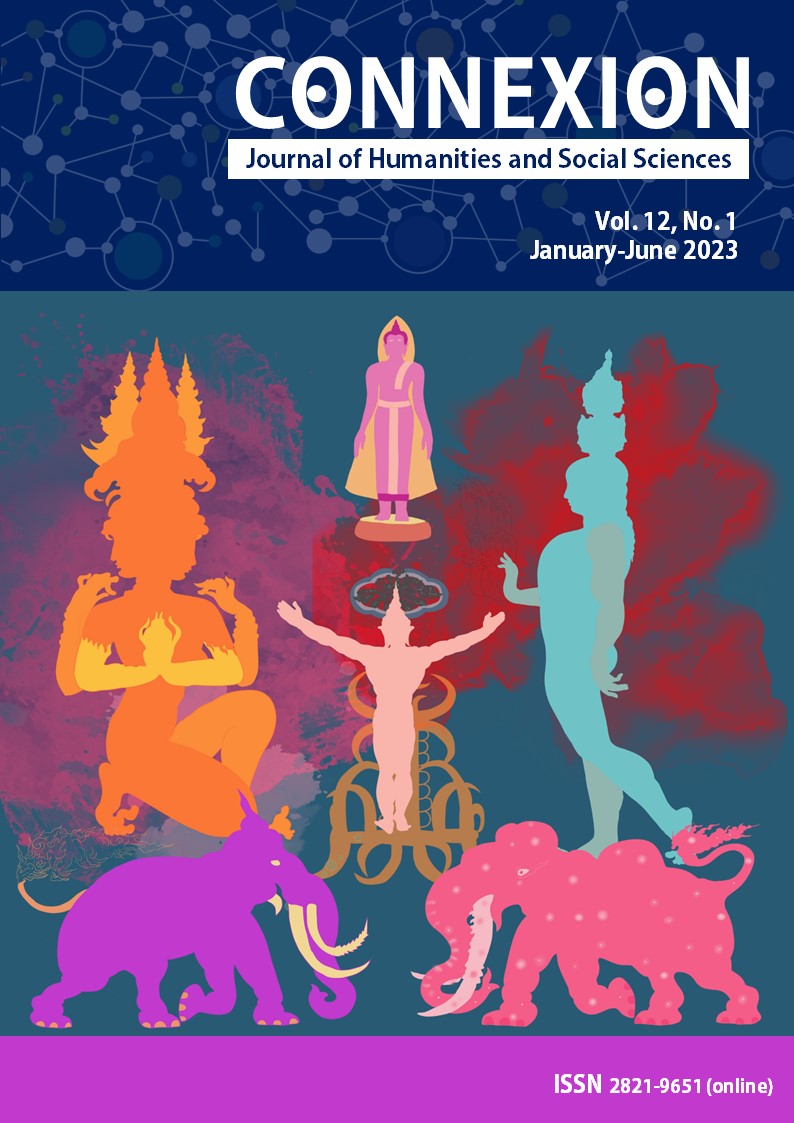Kukrit Studies: Beliefs about Colors
Main Article Content
Abstract
This article aims to present beliefs about colors in M.R. Kukrit Pramoj’ works, which inform M.R. Kukrit Pramoj’s contributions to Thai education in another aspect. The colors found are varied, but they conveys the beliefs of different groups of people and have a source or linking point. There are 4 colors: yellow, red, black and purple. All four colors are symbols of royalty, but they don’t show consistently among all ethnic groups. Yellow is the color of the ruling classes according to Chinese and ancient Khmer beliefs. Red is the color of royalty according to the beliefs of the Myanmar people. Black represents the ascendancy of the Huan clan in southern China. Also, purple is a symbol of the ruling class according to ancient Roman traditions. Moreover, each color has other meanings that can be further subdivided. Yellow symbolizes cowardice in the British beliefs. Red conveys the impurity of puritan Hinduism. But at the same time, it is a symbol of prosperity and honor according to Chinese beliefs. While black represents dark power, inaupiciousness and evil in beliefs of the Westerners.
Article Details

This work is licensed under a Creative Commons Attribution-NonCommercial-NoDerivatives 4.0 International License.
Copyright
Connexion: Journal of Humanities and Social Sciences has an exclusive right to publish the accepted articles in any form. However, the author retains the following rights:
1. The right to the ownership of the article;
2. The right to use all or part of the article in his/her other works;
3. The right to re-produce the article for personal use or for use in the author’s organisation, in which case the author must obtain permission from Connexion: Journal of Humanities and Social Sciences;
4. The right to make copies of all or part of the work for educational use or for the author’s use in classroom teaching; and
5. The right to include the work (both the preprinted and printed versions) in an institutional repository.
References
Pramoj, K. (1971) Illusion land (เมืองมายา), 2nd edition, Phra Nakhon: Kaona Press. (in Thai)
Pramoj, K. (1986) Nothing new this year (ปีนี้ไม่มีอะไรใหม่), Bangkok: Siam Rath. (in Thai)
Pramoj, K. (1988) Knowledge doesn't weigh you down (รู้ไว้ใช่ว่า), Bangkok: Siam Rath. (in Thai)
Pramoj, K. (2000) Khunchang Khunphaen, Reread edition (ขุนช้างขุนแผน ฉบับอ่านใหม่), Bangkok: Dokya 2000. (in Thai)
Pramoj, K. (2002a) Battle of complexions (สงครามผิว), Bangkok: Dokya 2000. (in Thai)
Pramoj, K. (2002b) Jews (ยิว), 7th edition, Bangkok: Dokya 2000. (in Thai)
Pramoj, K. (2005a) Dignity Farang (ฝรั่งศักดินา), Bangkok: Nanmeebooks. (in Thai)
Pramoj, K. (2005b) Funny stories (เรื่องขำขัน), Bangkok: Dokya 2000. (in Thai)
Pramoj, K. (2005c) Save little by little (เก็บเล็กผสมน้อย), Bangkok: Dokya 2000. (in Thai)
Pramoj, K. (2011) Four reigns (สี่แผ่นดิน), 15th edition, Bangkok: Dokya 2000. (in Thai)
Pramoj, K. (2012) Empress Dowager Cixi (ซูสีไทเฮา), Bangkok: Dokya 2000. (in Thai)
Pramoj, K. (2013a) Discussion on Khmer (ถกเขมร), Bangkok: Dokya 2000. (in Thai)
Pramoj, K. (2013b) Morals of the Aryans (ธรรมแห่งอริยะ), 2nd edition, Bangkok: Dokya 2000. (in Thai)
Pramoj, K. (2013c) The three kingdoms, capitalist edition: Cao Cao, forever master (สามก๊กฉบับนายทุน ตอน “โจโฉ นายกฯ ตลอดกาล”), 13th edition, Bangkok: Dokya 2000. (in Thai)
Pramoj, K. (2013d) A history of Attila the Hun (ฮวนนั้ง), 2nd edition, Bangkok: Dokya 2000. (in Thai)
Pramoj, K. (2018) The fall of the Burmese (พม่าเสียเมือง), 19th edition, Bangkok: Dokya 2000. (in Thai)
Huxley, A. (2013) The perennial philosophy (ปรัชญาอมตะ) (Attagara. K, Trans.), Nonthaburi: Amarin Printing and Publishing. (in Thai)
Lang, A. (2019) Tales of Troy and Greece (ตำนานสงครามกรุงทรอย) (Chunnasart. P, Trans.), Bangkok: Arrow. (in Thai)
Kurlansky, M. (2008) Salt: A world history (ประวัติศาสตร์โลกผ่านเกลือ) (Raksriaksorn. R, Trans.), Bangkok: Matichon. (in Thai)
Sathiankoset. (2008) Rites of transition (ประเพณีเกี่ยวกับชีวิต), 4th edition, Bangkok: Sayam. (in Thai)
Thitathan, S. (1979) Ramakien: A study of tale transmission (รามเกียรติ์: ศึกษาในแง่การแพร่กระจายของนิทาน), Bangkok: Chulalongkorn University. (in Thai)
Yaemnatda, S. (2004) Indian tales (ภารตนิยาย), Bangkok: Parbpim Printing. (in Thai)


